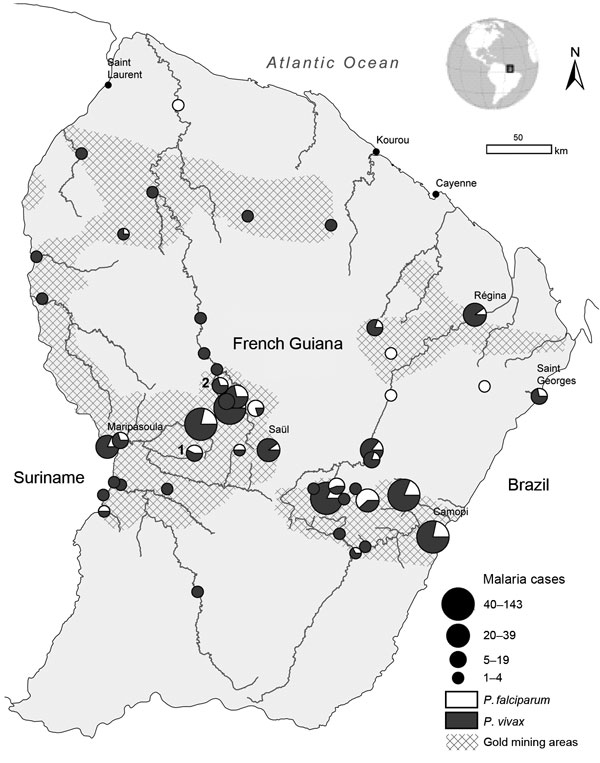Volume 22, Number 2—February 2016
Letter
Malaria in French Guiana Linked to Illegal Gold Mining
Figure

Figure. Geographic distribution of presumed places of exposure for 742 single-infection Plasmodium vivax (586) and P. falciparum (156) malaria cases reported among French Armed Forces in French Guiana, 2008–2014. Numbers on map show illegal gold mining sites where entomologic investigations were conducted; 1 indicates Eau Claire; 2 indicates Dagobert.
Page created: January 19, 2016
Page updated: January 19, 2016
Page reviewed: January 19, 2016
The conclusions, findings, and opinions expressed by authors contributing to this journal do not necessarily reflect the official position of the U.S. Department of Health and Human Services, the Public Health Service, the Centers for Disease Control and Prevention, or the authors' affiliated institutions. Use of trade names is for identification only and does not imply endorsement by any of the groups named above.